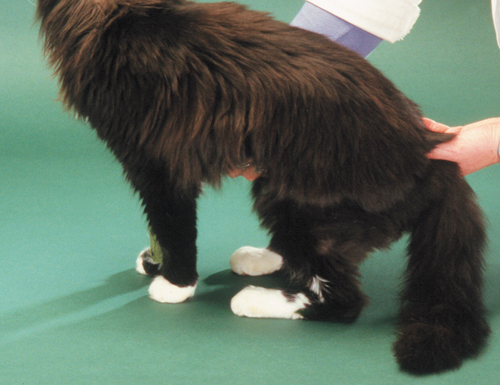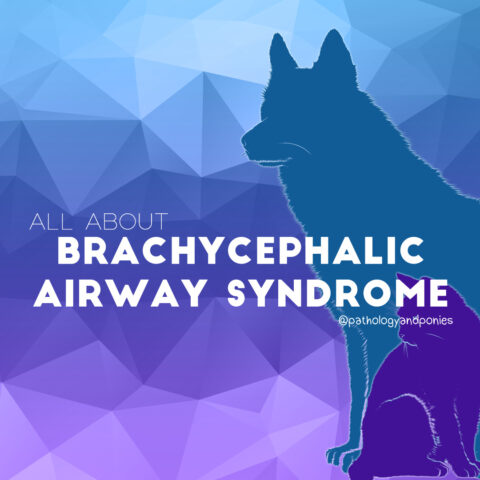Today’s path rounds are on 𝐝𝐢𝐚𝐛𝐞𝐭𝐞𝐬 𝐦𝐞𝐥𝐥𝐢𝐭𝐮𝐬! No real reason, just thought it would be fun to get some pancreas up in here. This post is quite long, but hopefully it’s interesting!
𝐖𝐡𝐚𝐭 𝐢𝐬 𝐢𝐭?
Diabetes mellitus is a 𝐦𝐞𝐭𝐚𝐛𝐨𝐥𝐢𝐜 𝐝𝐢𝐬𝐞𝐚𝐬𝐞, meaning that it impacts how the body processes certain materials. In diabetes mellitus, 𝐠𝐥𝐮𝐜𝐨𝐬𝐞 (the major sugar in our body) is not able to move through its normal metabolic cycle, causing it to accumulate in the blood stream causing 𝐡𝐲𝐩𝐞𝐫𝐠𝐥𝐲𝐜𝐞𝐦𝐢𝐚 (too much glucose in the blood).
𝐖𝐡𝐚𝐭 𝐜𝐚𝐮𝐬𝐞𝐬 𝐢𝐭?
There are two basic underlying problems in diabetes mellitus, both relating to 𝐢𝐧𝐬𝐮𝐥𝐢𝐧, which is a hormone produced by the pancreas that allows glucose to move into your cells for them to produce energy.
In 𝐓𝐲𝐩𝐞 𝟏 𝐝𝐢𝐚𝐛𝐞𝐭𝐞𝐬, there is inadequate production of insulin due to damage to the pancreas. Typically, this is 𝐢𝐦𝐦𝐮𝐧𝐞–𝐦𝐞𝐝𝐢𝐚𝐭𝐞𝐝, meaning that the body’s immune system attacks the pancreas cells and destroys them. Why the body starts doing this is uncertain, but it definitely leads to problems for affected critters!
In 𝐓𝐲𝐩𝐞 𝟐 𝐝𝐢𝐚𝐛𝐞𝐭𝐞𝐬, the tissues do not respond to insulin appropriately, and therefore do not take up glucose. In humans, there are strong correlations with development of Type 2 diabetes and obesity, inactivity, micronutrient imbalances and genetic factors. We haven’t fully confirmed what the predisposing factors are in animals, but they are likely similar!
𝐖𝐡𝐨 𝐠𝐞𝐭𝐬 𝐢𝐭?
Any species can get this disease, however today we are going to focus on dogs and cats, as they are the main species that we see this condition in. Dogs tend to get Type 1 diabetes, while cats tend to get Type 2 diabetes.
𝐓𝐞𝐥𝐥 𝐦𝐞 𝐦𝐨𝐫𝐞 𝐚𝐛𝐨𝐮𝐭 𝐝𝐨𝐠𝐬 𝐰𝐢𝐭𝐡 𝐬𝐚𝐝 𝐩𝐚𝐧𝐜𝐫𝐞𝐚𝐬𝐞𝐬!
As mentioned above, dogs tend to get Type 1 diabetes. The cause is most damage to the 𝐩𝐚𝐧𝐜𝐫𝐞𝐚𝐭𝐢𝐜 𝐢𝐬𝐥𝐞𝐭𝐬 (where insulin is produced) due to previous disease in the pancreas. For example, dogs are prone to 𝐩𝐚𝐧𝐜𝐫𝐞𝐚𝐭𝐢𝐭𝐢𝐬 (inflammation in the pancreas), which is a topic for another day. But it can be an inciting cause of damage to the pancreas, leading to development of diabetes. Without having these islets working properly, there is not enough insulin production to encourage glucose to move into the cells, causing hyperglycemia. There are also cases of genetic-linked diabetes in Keeshonds, as well as cases of diabetes due to improper development of the pancreas.
𝐖𝐡𝐚𝐭 𝐚𝐛𝐨𝐮𝐭 𝐜𝐚𝐭𝐬 𝐰𝐡𝐨𝐬𝐞 𝐜𝐞𝐥𝐥𝐬 𝐝𝐨𝐧’𝐭 𝐥𝐢𝐤𝐞 𝐢𝐧𝐬𝐮𝐥𝐢𝐧 𝐚𝐧𝐲𝐦𝐨𝐫𝐞?
Cats tend to get Type 2 diabetes, which means their cells no longer respond to insulin to allow glucose uptake. The exact cause of this 𝐢𝐧𝐬𝐮𝐥𝐢𝐧 𝐫𝐞𝐬𝐢𝐬𝐭𝐚𝐧𝐜𝐞 is not known, but it leads to increased glucose in the blood because it is not going where it’s supposed to: into the cells. This causes the pancreatic islets to boost insulin production, as they desperately try to get the glucose levels under control. This can lead to burnout of these cells, causing damage and leading to underlying Type 1 diabetes.
𝐁𝐮𝐭 𝐰𝐡𝐲 𝐢𝐬 𝐡𝐲𝐩𝐞𝐫𝐠𝐥𝐲𝐜𝐞𝐦𝐢𝐚 𝐚𝐧𝐝 𝐝𝐢𝐚𝐛𝐞𝐭𝐞𝐬 𝐚 𝐩𝐫𝐨𝐛𝐥𝐞𝐦?
The primary issue with diabetes is that the cells no longer have an energy source! This can lead to a bunch of problems in a bunch of different tissues. To compensate, the body will begin to use up protein from the muscle and fat from various locations around the body to try and provide energy to the cells. This can lead to 𝐦𝐮𝐬𝐜𝐥𝐞 𝐰𝐚𝐬𝐭𝐢𝐧𝐠 (reduced muscle size and strength) and 𝐡𝐞𝐩𝐚𝐭𝐢𝐜 𝐥𝐢𝐩𝐢𝐝𝐨𝐬𝐢𝐬 (excess fat in the liver, see our previous article!).
In terms of hyperglycemia, the body does some weird things when there’s too much glucose floating around. There are way too many outcomes of hyperglycemia to discuss within this article, but one of the more interesting ones is production of 𝐬𝐨𝐫𝐛𝐢𝐭𝐨𝐥. Sorbitol is a particular form of sugar that is made when the body is trying to get rid of excess glucose that has a tendency to accumulate within cells, causing all kinds of issues! Here are two notable outcomes of sorbitol accumulation:
Dogs will frequently develop 𝐜𝐚𝐭𝐚𝐫𝐚𝐜𝐭𝐬 (clouding of the lens of the eye) due to diabetes, because of sorbitol accumulating within the lens. The body naturally wants to keep concentrations of different compounds in balance, so it attempts to dilute this massive amount of sorbitol with water, causing 𝐞𝐝𝐞𝐦𝐚 (excessive accumulation of fluid) within the lens, leading to cataracts.
Cats also have a special presentation of diabetes called 𝐝𝐢𝐚𝐛𝐞𝐭𝐢𝐜 𝐧𝐞𝐮𝐫𝐨𝐩𝐚𝐭𝐡𝐲. Similar to the cataracts in dogs, there can be excessive accumulation of sorbitol within the 𝐦𝐲𝐞𝐥𝐢𝐧 𝐬𝐡𝐞𝐚𝐭𝐡𝐬(protective coverings) of various nerves. This can lead to damage to the nerve and prevent its normal conduction. This degenerative change can cause a 𝐩𝐥𝐚𝐧𝐭𝐢𝐠𝐫𝐚𝐝𝐞 𝐬𝐭𝐚𝐧𝐜𝐞in cats, meaning that they stand with their hocks on the ground. Weird!
𝐇𝐨𝐰 𝐢𝐬 𝐢𝐭 𝐝𝐢𝐚𝐠𝐧𝐨𝐬𝐞𝐝?
Animals with diabetes typically present with weight loss, 𝐩𝐨𝐥𝐲𝐩𝐡𝐚𝐠𝐢𝐚 (excessive hunger) and 𝐩𝐨𝐥𝐲𝐮𝐫𝐢𝐚 (excessive urination). Based on initial suspicion, the veterinarian will likely run bloodwork to look for hyperglycemia, and a 𝐮𝐫𝐢𝐧𝐚𝐥𝐲𝐬𝐢𝐬 (assessment of the urine) to look for 𝐠𝐥𝐮𝐜𝐨𝐬𝐮𝐫𝐢𝐚 (glucose in the urine). In fact, having glucosuria is where the name 𝐦𝐞𝐥𝐥𝐢𝐭𝐮𝐬 comes from! Mellitus means sweet in Latin, and supposedly doctors used to taste the urine of patients to diagnose this condition. Gross.
Based on this collection of clinical signs, veterinarians can often definitively diagnose diabetes mellitus, and begin treatment.
𝐇𝐨𝐰 𝐢𝐬 𝐢𝐭 𝐭𝐫𝐞𝐚𝐭𝐞𝐝?
Animals with diabetes mellitus are generally treated with injectable insulin. For Type 1 patients, this insulin replaces the insulin that their pancreas isn’t producing. For Type 2 patients, the insulin raises insulin levels in the blood, to hopefully overwhelm the cells with so much insulin they can’t ignore it anymore. This treatment is usually quite successful with proper lifestyle management and working closely with the veterinarian!
𝐏𝐡𝐨𝐭𝐨𝐬
1) A histology photo showing 𝐯𝐚𝐜𝐮𝐨𝐥𝐚𝐫 𝐝𝐞𝐠𝐧𝐞𝐫𝐚𝐭𝐢𝐨𝐧 (excessive bubbling) of the pancreatic islets due to diabetes.
2) A liver with hepatic lipidosis.
3) A dog with cataracts in both eyes.
4) A cat with a plantigrade stance from diabetic neuropathy. QOTD: Can you name a species that is normally plantigrade? (Besides humans!)
𝐒𝐨𝐮𝐫𝐜𝐞𝐬
Maxie, G. Jubb, Kennedy and Palmer’s Pathology of Domestic Animals, Volume 2. Sixth Edition.
Photos 2-3 courtesy of Noah’s Arkive.
Photo 4 courtsey of WikiVet/Manson Publishing.








